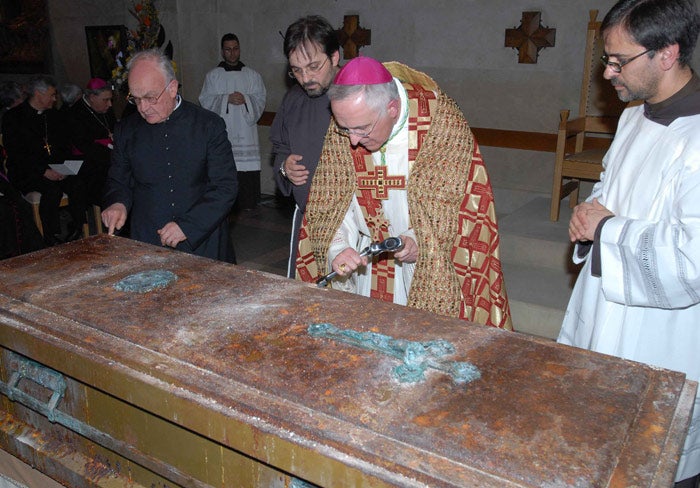The strange case of Padre Pio is reopened, along with his tomb
No sign of stigmata as monk's body is exhumed after 40 years

The tomb was opened just after midnight, in the bitter cold. The Vatican did not want too many people around as it exhumed Padre Pio, a man whose millions of followers say he could foresee the future and be in two places at once. "As soon as we got inside we could clearly make out the beard," said Domenico D'Ambrosio, the archbishop who led the ceremony early on Monday morning. "The top part of the skull is partly skeletal, but the chin is perfect and the rest of the body is well preserved."
The feet were bare, as is the tradition for Capuchin monks. There was, however, a problem – a big one – for the clerics and medical experts peering at the body: no stigmata.
Neither his feet nor his hands showed any sign of the wounds expected of a man who the church says bled as Christ did on the cross – spontaneously and without cause, on and off for more than 50 years. Was this, as sceptics immediately claimed, proof that Padre Pio was a fake?
He died in 1968, aged 81, but the bleeding (and miracles recorded in his name) led to the monk being made a saint six years ago. One author has suggested he was a self-harmer who used carbolic acid to create the wounds, but after years of scorning him the Vatican now insists they were not caused by "external forces".
Born Francesco Forgione in a small town near Naples in 1887, he joined the Capuchin order and took a name that means "pious" in Italian. The wounds started to appear when he was 23, but their nature – and the cult that grew up around him – alarmed the Catholic authorities. Padre Pio was banned from celebrating mass in public; but one of those who made a pilgrimage to Foggia for confession with him was a young Pole who became Pope John Paul II – and who made Padre Pio a saint.
His image can be seen in windows and on vehicles throughout Italy. Seven million people a year visit his tomb at the church of Santa Maria delle Grazie in San Giovanni Rotondo, near the friary where he lived.
The body will be put on display for several months from April – even after Domenico D'Ambrosio was forced to say, after examining the body again in daylight on Monday: "The signs of the stigmata were not visible." And so the strange case of Padre Pio, closed on the authority of the last Pope, has been reopened along with his tomb.
Join our commenting forum
Join thought-provoking conversations, follow other Independent readers and see their replies
Comments